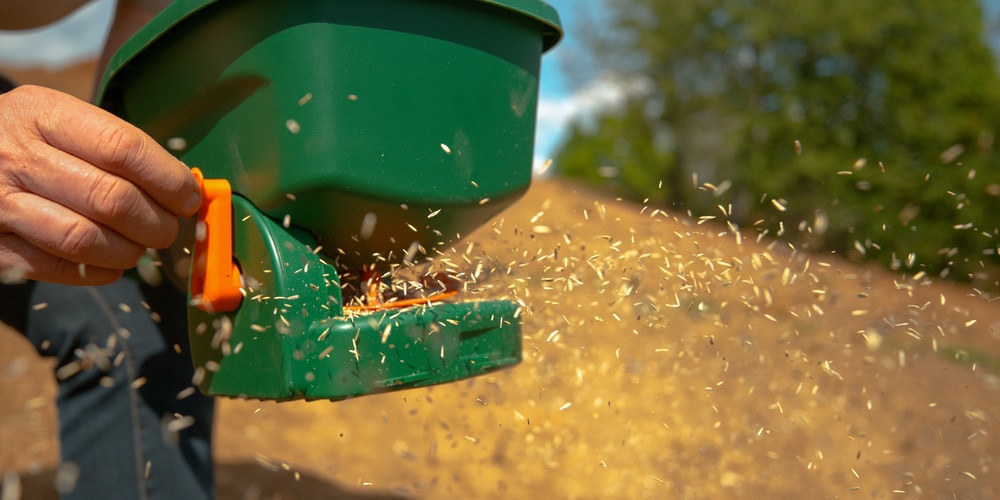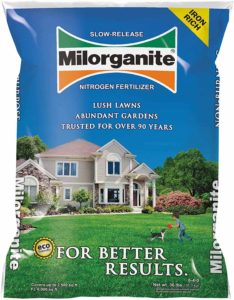Lawn beginners and those new to Milorganite may ask, ‘can you put milorganite on new grass seed?’
If you’re looking to boost the growth of your seeds then it’s generally okay to put milorganite. However, there are some things to consider when sowing new grass seeds and fertilizing.
Milorganite and New Grass Seed
Milorganite is an organic, slow-release fertilizer you can use on your lawn. It’s largely made up of nitrogen with some iron content, which makes the grass appear greener. What makes milorganite so good is that there’s virtually zero risk of burning your grass and it’s organic.
The intent of using fertilizer on new grass seed is to support the nutritional requirements of the grass as it grows. Typically, lawn owners will apply fertilizer first before planting the grass seeds, and this is the same with morganite.
Being a slow release and organic fertilizer makes it one of the best companions for growing new grass. Aside from fertilizing at the time of planting, you can also apply it during different parts of the growing season (depending on which grass type you have).
In short, Milorganite is a good starter fertilizer for your grass seeds and will meet its growing needs while being safe. Feed your new lawn by mixing in milorganite at the top few inches before seeding.
When to Apply Milorganite for Grass
Milorganite for new grass seed will largely depend on which type of grass you have.
Basically, you have two grass types- warm season and cool season. Warm season grass species are usually planted in the south while the north mostly has cool season grass species.
Mix in the organic fertilizer with the top inch or two of your lawn soil before sowing the grass seeds. Once the seeds germinate and you’ve mowed it three times, it’s recommended that you put in two bags of milorganite (total 64 pounds) per 2,500 sq feet, then water them in well. Afterwards, you can follow the regular rate of application as directed.
Fertilizing with Milorganite for grass can be done up to four times per growing season. If you intend to do it once a year, then the best time would be early fall so you will give it a boost to survive and grow back after winter passes.
Milorganite and Warm Season Grass
All warm season grasses will do well with milorganite on new seed planting. Once it’s established you can start applying the organic fertilizer in early spring and when the danger of frost has passed.
As a general rule, Centipedegrass and Bahia grass can make do with a twice-a-year milorganite application (spring and summer). St. Augustine, Bermuda and Zoysia can benefit from fertilization in Easter, Memorial Day, Labor Day and the first week of October.
This ensures your grass will have all the nutrients it needs and have an appealing dark green color all year round.
Milorganite and Cool Season Grass
Milorganite on new grass seed is also fine if you intend to grow cool season grasses such as Fescue, Kentucky Bluegrass and Perennial Ryegrass, among others. Just make sure to mix it in the topsoil before sowing the seeds for the best results.
Much like warm season grass, a new lawn can benefit from regular fertilization. You can spread it out four times a year, particularly Memorial Day, the 4th of July, Labor Day and Thanksgiving.
You can do a double dose after the seeds germinate and you’ve mowed three times. Afterwards, you can just apply milorganite at a rate of one bag (about 32 pounds) per 2,500 sq ft of lawn.
Related Article: How long can new grass seed go without water?

